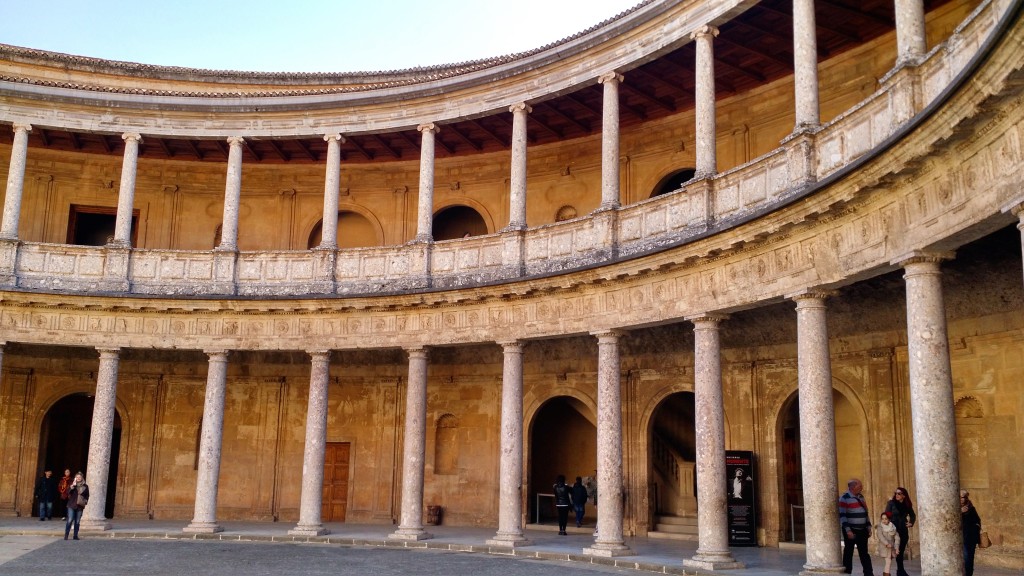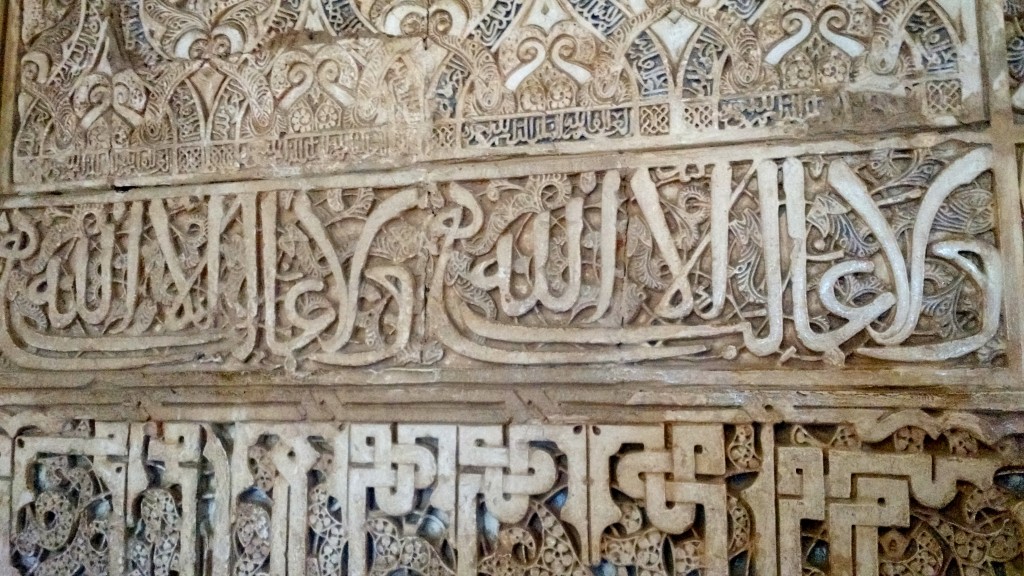By Alex Larsen, Seville
For centuries, the Roman Catholic Church issued declarations of conquest against the nations and people that opposed the spread of Western Christendom. The details and nuances of the Crusades are confusing at best, but there remained a constant theme throughout: disrespect. This came to fruition in a number of ways. Typically, the storming armies would desecrate towns, leaving smoldering rubble where temples and homes once stood. The intricate, time-consuming detail that went into the buildings - especially those used as a place of worship - was disregarded and disrespected. That, after all, was the goal.
Sometimes, however, the goal of the Crusaders went beyond disrespect by destruction. There could be no higher level of disrespect and blatant mockery than to leave monuments - especially those of religious value - physically unharmed and yet entirely disrespected in their existence. This kind of victorious disrespect is on display high over the city of Granada, embodied by the Alhambra.
 |
| The round courtyard of one of the buildings inside the Alhambra. |
Granada was once the last remaining Islamic city in Spain. For 250 years the Arabs lived at the Alhambra, safely contained inside the mile and a half of solid stone wall. The King of Granada would live in the Alhambra with 1,000 other people - a small town within the city. (In all, 22 different kings called the Alhambra their home.) The walls are topped with stone watchtowers, and the highest point - the military center - is the oldest remaining structure of the fortress. The Arab kings knew that security must be a priority, for even within the walls of the Alhambra, nine of the 22 kings were murdered. The structure of the Alhambra itself is an engineering marvel. The marble columns are all still intact, despite over a thousand tremors a year, because of lead disks inserted at their bases. Over three miles of river, flowing down from the Sierra Nevada mountains, is directed into the fortress by way of an elaborate aqueduct. By using the power of gravity alone, this system once provided all the necessary water for the 1,000 plus residents of the Alhambra, in addition to dozens of fountains throughout the town and palace.
 |
| Fountains in the Alhambra gardens, powered only by gravity. |
In 1492 the Alhambra changed. This feat of construction and engineering, coupled with its dedication to Islam, fell to the conquering Roman Catholics under charge from King Ferdinand and Queen Isabella. When they had taken control of the Alhambra, the Crusaders decided to seize it rather than to destroy it. The Arabians surrendered and all traces of the Islamic importance became a display of mockery. Over 9,000 times the phrase "There is no victor but Allah" is etched and carved into the palace. That left over 9,000 reminders to the King and Queen of now all of Spain that they - and their god - were victorious.
 |
| "There is no victor but Allah" scripted in Arabic 9,000 times in the Alhambra. |
Shortly after claiming Granada and the Alhambra for Spain, unifying the country, Ferdinand and Isabella commissioned the journey of Christopher Columbus. It was from Granada that Columbus left to begin his preparations to find a sea route to India (which famously became his discovery of the Americas). The ruling King and Queen still rest in Granada, buried at the Royal Chapel just down the hill from the Alhambra, which now stands as the only Syrian-Arabian palace still intact.
Over 7,000 people visit the Alhambra each day, taking in the reminder of the empire that the Roman Catholic army and the country of Spain defeated. The Crusaders left a monument to their success, and hoards of tourists recognize this every day - and respect it.
Alex Larsen is the Spring 2015 CEA MOJO Blogger in Seville, Spain. He is currently a junior at The University of Northwestern - St. Paul.










